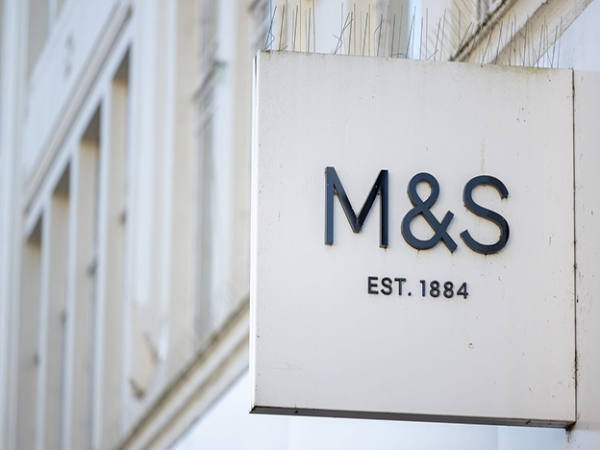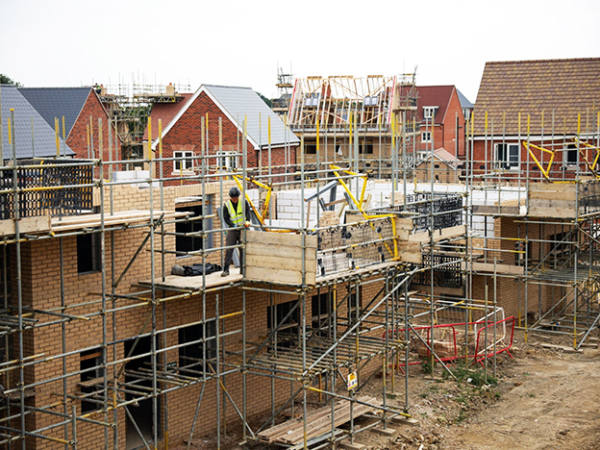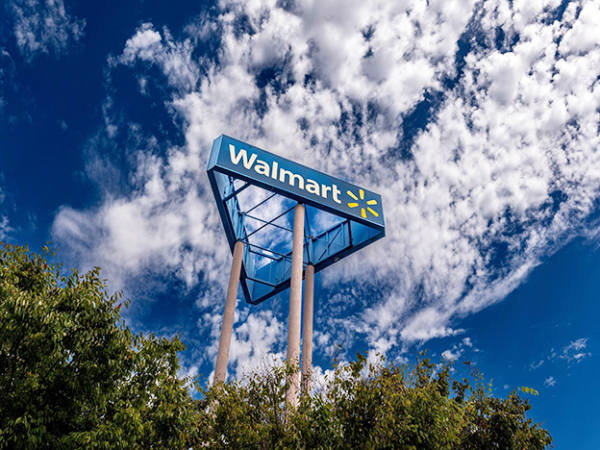Ashtead’s success in the US has made its shares a fantastic long-term investment. And strong fundamental support for non-residential construction means that its growth story probably has some way to run.
The business
Ashtead is a leading equipment rental supplier in the UK, US and Canada. It primarily sells to customers in the non-residential construction market. These customers can rent a large range of equipment and tools for construction projects without the cost and hassle of owning and managing large fleets themselves.
The range of equipment available for hire from Ashtead is vast. Companies can rent work platforms, scaffolding, ladders, concrete equipment, air conditioning and heating units, loaders and excavators, forklifts, generators, pumps, temporary walls, fencing and structures, floor care equipment, air compressors and general construction tools.
Ashtead’s business and profits are dominated by its US operations, trading under the Sunbelt name. The business operates from a network of outlets clustered across major metropolitan areas of the US.
While construction is a notoriously cyclical industry and experiences big booms and busts, Ashtead has been able to thrive and grow over the economic cycle.
Its shares have been a tremendous long-term investment and have returned over 800 per cent over the past decade compared with 67 per cent for the FTSE All-Share Index.
Cyclical but increasingly profitable
Ashtead’s profits and return on investment (ROI) on its equipment fleet do move up and down in line with the overall economy.
You can see in the chart the sharp downturn in ROI and profit margins during 2009-11 in the aftermath of the financial crisis, although its profitability held up remarkably well during the Covid-19 pandemic.
What is striking is the improving profit margins over the past decade and the very impressive ROI numbers the company has been producing.
You can also see that Ashtead’s profitability stacks up well against its US peers. The bigger companies, Sunbelt (Ashtead) and United Rentals (US:URI), are also more profitable than their smaller peers when it comes to profit margins and returns on capital, suggesting that scale helps profitability.
| Ashtead profitability vs US peers | |||||
Company | Ticker | EBIT Mgn NTM (%) | FCF Margin (%) | ROE NTM (%) | Return on Capital (%) |
Ashtead Group | AHT | 27.3 | 5.1 | 27.8 | 19.4 |
United Rentals | URI-US | 28.0 | 1.4 | 28.6 | 19.7 |
Herc Holdings | HRI-US | 21.7 | -12.9 | - | 13.1 |
H&E Equipment Services | HEES-US | 18.8 | -21.7 | 28.4 | 13.0 |
Average |
| 23.9 | -7.0 | 28.3 | 16.3 |
| Source: FactSet | |||||
Spending has turbocharged profit
In many ways, Ashtead has performed like a very high-interest savings account, as its profits have soared as it has poured huge amounts of money into its business.
Ashtead has spent increasing amounts of money increasing the size of its rental equipment assets and opening new selling outlets. This has been complemented by large spending on buying up smaller rental companies to consolidate the US market – a trend that could have much further to run.
Strong and growing underlying free cash flow
Many investors weigh up a business by calculating how much surplus or free cash flow it generates every year.
There is no universally accepted way of calculating free cash flow, but it is essentially the company’s trading cash flow less the money spent on paying tax, interest on borrowings and investment in the business (often referred to as capital expenditure, or capex for short).
For a business such as Ashtead, which regularly sells its assets after a period of time, the cash inflows from this activity would also be used in the free cash flow calculation.
Some investors deduct all the company’s capex spending (replacement and growth) when calculating free cash flow. This is fine, but a possible problem with this is that it penalises a company when it is investing in new assets to grow its future profits and cash flows.
Prominent investors such as Warren Buffett and Terry Smith calculate free cash flow by only deducting replacement or “stay in business” capex. They do this to get an estimate of the business’s owner earnings on a cash basis, so they can compare it with the after-tax or net profits found on the income statement and use it to value companies.
The main issue with this approach is calculating a number for replacement capex. For an outside investor, it is not an easy thing to do, although there are ways of estimating it.
Fortunately, for investors in Ashtead, the company gives you this all-important number. When used to calculate underlying free cash flow it reveals that the company has had very impressive and growing levels of free cash flow generation over the past decade.
This cash flow has funded the growth of its business from new locations, the buying of rival companies, growing dividends and share buybacks. All have served shareholders very well.
Clean profits
Rental companies often used to come with big health warnings attached to them. This was not just due to the cyclicality of their profits but also whether the profits were believable or not.
The biggest expense of owning rental assets is their depreciation. One of the easiest ways for a rental company to boost its profits is to under-depreciate the assets.
One way to check if a company is under-depreciating its assets is to see if it is making losses when it sells them. If a company has been under-depreciating then the carrying value of the asset on the balance sheet will be too high (it hasn’t been depreciated enough) and will be more than the sale proceeds, which will result in a loss on disposal.
Fortunately, Ashtead gives investors the information needed to see if this is happening. The good news is that Ashtead has consistently made profits on selling its used rental equipment for many years.
In fact, the second-hand market for assets has been so strong recently that its profits from this activity have soared.
US rental market growth potential
The outlook for the US non-residential construction market continues to look favourable despite ongoing worries about a recession in the US economy. Spending on non-residential construction topped $1tn (£790bn) this year and is expected to grow from this level over the next few years.
Growth is being driven by several factors. Many US manufacturing assets are now quite old and need replacing and modernising. This trend is also being boosted by an increase in reshoring – a reversal of the globalisation trend of recent years – in industries such as liquified natural gas (LNG), automotives and semiconductors.
US government legislation is leading to a huge increase in infrastructure spending, which could total as much as $2tn over the next decade.
Large amounts of money are expected to be spent on roads, healthcare facilities, energy, power, utility networks and warehouses.
Then there is the increase in so-called mega projects – where the cost is over $400mn – which will be seen in areas such as electric vehicle plants, electric vehicle battery factories, solar and wind farms and semiconductor plants.
As these mega projects are built out, there will also be an increase in ongoing maintenance, repair and operations (MRO) activity such as cleaning, painting and decorating, temporary power and repairs.
This favourable backdrop is expected to see continued growth in demand for equipment rental as more companies choose to rent rather than own assets to complete their construction projects.
While the longer-term outlook is good, so is the near-term. Leading survey indicators of the US construction market are very strong.
The Dodge Momentum Index (DMI) is a monthly measure of the initial report of non-residential building projects in planning. While the DMI softened slightly in July, it was 21 per cent higher than a year ago.
Within the data, there is a split between the fortunes of commercial projects, which are more sensitive to rising interest rates and stricter lending criteria, and institutional projects, which are backed by government funding and legislation. The institutional DMI is 35 per cent higher than it was a year ago, which bodes well for Ashtead’s profit outlook into 2024.
The strength of the DMI is also supported by the Associated Builders and Contractors (ABC) construction backlog data. Backlogs increased to 9.3 months in July compared with 8.7 months a year ago and show that pent-up demand for construction spending is very strong right now.
Growth expectations
While the overall market should see steady growth, the market leaders such as Sunbelt and United Rentals are expected to keep on taking a bigger slice of it.
This has been the case for well over a decade now. Since 2010, Sunbelt’s US market share has increased from 4 per cent to 13 per cent, while United Rentals' has increased from 5 per cent to 17 per cent. The top 10 biggest companies currently control 42 per cent of the market, compared with 21 per cent back in 2010.
The consolidation of the market is expected to continue. According to Ashtead, 37 per cent of the US market is still in the hands of small independent companies.
These companies are seeing their competitive positioning deteriorate due to their relative lack of buying power and equipment fleet size. With lead times for buying equipment still longer than before the Covid-19 pandemic, a large fleet is a prerequisite for winning new business as it is able to respond faster to customer demand.
As a result, many of these companies are likely to be bought out by the industry leaders. Ashtead believes that in the future, two or three companies will control at least half of the US market.
One of the keys to Ashtead’s long-term success has been its ability to integrate acquisitions into its cluster locations where it can serve more customers, have higher plant utilisation and make better margins.
Rising prices and good demand/supply balance
The US market looks extremely attractive right now. One of the concerns that investors might have at times like this is that more equipment might come onto the market to chase the high returns on offer, and in so doing actually push prices down by creating excess supply.
Fortunately, this does not seem to be the case. Both Ashtead and United Rentals have been very reassuring on this issue in recent weeks. Both have stated that the demand/supply balance of the market is good and that pricing discipline has been maintained.
Long supply lead times also suggest that new equipment cannot come onto the market quickly.
What is also reassuring is that the rental companies are able to pass on inflationary cost increases in their rental prices. They are also able to afford to keep their fleets young and fresh in order to keep prices rising.
At the moment, it seems that the big rental companies are set fair for continued strong earnings growth over the next few years.
Valuation looks attractive given growth outlook
Given the short and longer-term growth outlook, it can be argued that Ashtead and the US equipment rental sector are attractively valued.
Were it not for their cyclical nature, the kind of growth and profitability expected would undoubtedly attract higher valuations in other less cyclical sectors.
| Ashtead valuation vs US peers | ||||
|---|---|---|---|---|
Company | Ticker | Market Cap $m | EV/EBIT NTM (x) | P/E NTM (x) |
Ashtead Group | AHT-GB | 29776 | 11.7x | 14.7x |
United Rentals | URI-US | 31426 | 10.6x | 11.0x |
Herc Holdings | HRI-US | 3627 | 9.4x | 8.9x |
H&E Equipment Services | HEES-US | 1637 | 10.3x | 9.5x |
Average |
|
| 10.5x | 11.0x |
| Source: FactSet | ||||
In times when it is common to talk about valuation discounts applying to UK companies compared with their US peers, this is not the case with Ashtead.
Its shares trade on a premium valuation to United Rentals despite having very similar levels of profitability and medium-term growth. However, Ashtead has commanded a premium valuation for at least the past decade on the basis of its share price compared with the next 12 months’ forecast earnings per share (EPS).
There is a case for arguing that United Rentals’ discount is unwarranted and that its shares are better value. Readers looking for exposure to the sector could consider it as an alternative or addition to Ashtead.
A compelling opportunity?
That said, Ashtead’s shares have seen its forward price/earnings (PE) ratio almost halve in the past three years – as rising interest rates have brought down the valuations of highly rated shares – leaving them looking good value against its long-term history.
In absolute terms, the shares look compelling given the strength of its business model and the strong growth potential on offer.
One day there will be another recession and Ashtead will adapt. However, governments look likely to keep on trying to stimulate economies with infrastructure spending, which means the company may not be as vulnerable as it has been in the past.


















